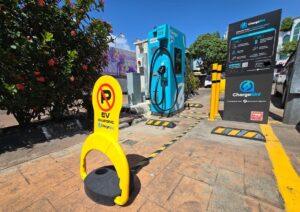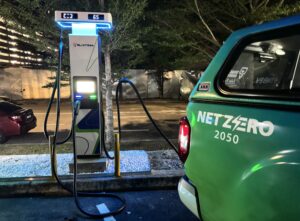Back in 2016, Amazon debuted its “Just Walk Out” cashierless stores, promising to reinvent grocery shopping. No queues, no cashiers, just sensors and AI tracking what you took off the shelves. But nearly a decade later, Amazon has quietly scaled back the concept.
Why? Because the technology was expensive, the operations were complex, and frankly, consumers were already happy shopping online.
Now, Morgan’s Retail believes it has the answer. The company has announced the launch of what it calls the world’s first fully AI-run, zero-inventory store, opening in Brooklyn, New York, later this year. The pitch is bold. Just scan, tap, and go. But strip away the buzzwords, and it feels a lot like bringing online shopping offline.
What Morgan’s Promises
Morgan’s Retail describes its concept as a fully AI-powered environment that runs itself, from personalised recommendations to security, cleaning, pricing, and even powering the store with kinetic energy harvested from your footsteps. Instead of physical shelves, shoppers browse a Customer Visualisation Unit (CVU), essentially a virtual catalogue where they can explore products and see detailed info before purchasing.

In theory, it’s shopping without queues, stock shortages, or carbon emissions. In practice, though, a lot of it raises questions.
The Questions?
- AR Wayfinding: Most likely used to guide you to the kiosk or terminal with the item you want. Since the store layouts can change dynamically, AR points you in the right direction. But constant reshuffling could also become an annoyance, even with AR support.
- AI Monitoring Inventory & Prices: Tracking stock makes sense, but “adjusting prices” is murkier. Does it mean dynamic pricing that changes by demand or time of day? Without clarity, this risks frustrating customers.
- AI Overseeing Security: Security against what if there are no goods to steal. Realistically, this means monitoring in-store activity. Useful, but not nearly as groundbreaking as it sounds.
- AI Cleaning Shelves: With zero inventory, there aren’t really shelves to clean. This could simply mean automated prompts or assigning staff to handle maintenance, which isn’t exactly futuristic.
- Smart Floor Sensors: The idea of footsteps generating electricity is clever, but realistically, it can only supplement the store’s energy use. It’s more of a sustainability gesture than a full solution.
The one genuinely interesting feature is the “smart store layouts” that adapt in real time based on customer behaviour. For example, during a festive season, the system could move the most popular items or promotions to the front of the store, while pushing less relevant products to the background.
It’s a clever idea, but again, it’s not far off from what e-commerce platforms already do when they reshuffle their homepages or push targeted product banners.
The Big Missing Detail
One thing the press release never makes clear is what happens after checkout. If Morgan’s Retail is truly operating on a zero-inventory model, then customers can’t actually walk out with their purchases. That raises some awkward questions: are the items shipped to your home later, like a standard e-commerce order? Do you pick them up somewhere else? Or is the store essentially just a physical portal to place online orders?
Without that clarity, the experience risks feeling redundant. After all, if you leave empty-handed and wait for delivery anyway, why go to a store at all when you could just buy directly from your phone at home?
Morgan’s Big Bet

Morgan’s, of course, sees this differently. Group CEO Rajeev Lee frames the store as more than just another retail experiment, saying it’s “not just solving traditional retail challenges but fundamentally reinventing retail itself.” He argues that by embracing data, automation, and environmental responsibility, Morgan’s Retail is positioning itself as a global leader in tech-driven, sustainable retail.
The company points to the global retail market, projected to reach USD17.1 trillion, as proof of the scale of opportunity. In this context, Morgan’s AI-powered, zero-inventory model isn’t just about replicating e-commerce; it’s presented as a smarter, faster, greener way to shop. Lee also revealed ambitions to expand beyond the U.S., with Southeast Asia, Europe, and the Middle East on the roadmap, backed by a call for partnerships and investment.
Online Shopping with Extra Steps
Which brings us back to the big question: why would anyone walk into a store just to browse a virtual catalogue? Almost every feature Morgan’s touts already exists online, where you don’t need to leave your couch. If Amazon Go struggled to survive despite having physical products on shelves, what chance does a zero-inventory, AI-run store really have?
For now, we can’t test the concept as the first store is set to open in New York later this year. Morgan’s CEO has said there are plans to expand to Southeast Asia, which could eventually bring it to Malaysia. If that happens, we’ll see firsthand whether the experience changes our perspective.
Until then, it’s worth noting that Malaysia already has cashierless-lite experiences like Panas Express and FairPrice. These still stock real inventory but let you scan items yourself and walk out, a practical version of AI-assisted shopping. Morgan’s vision may be more futuristic, but it risks feeling like it’s reinventing e-commerce with extra steps.






